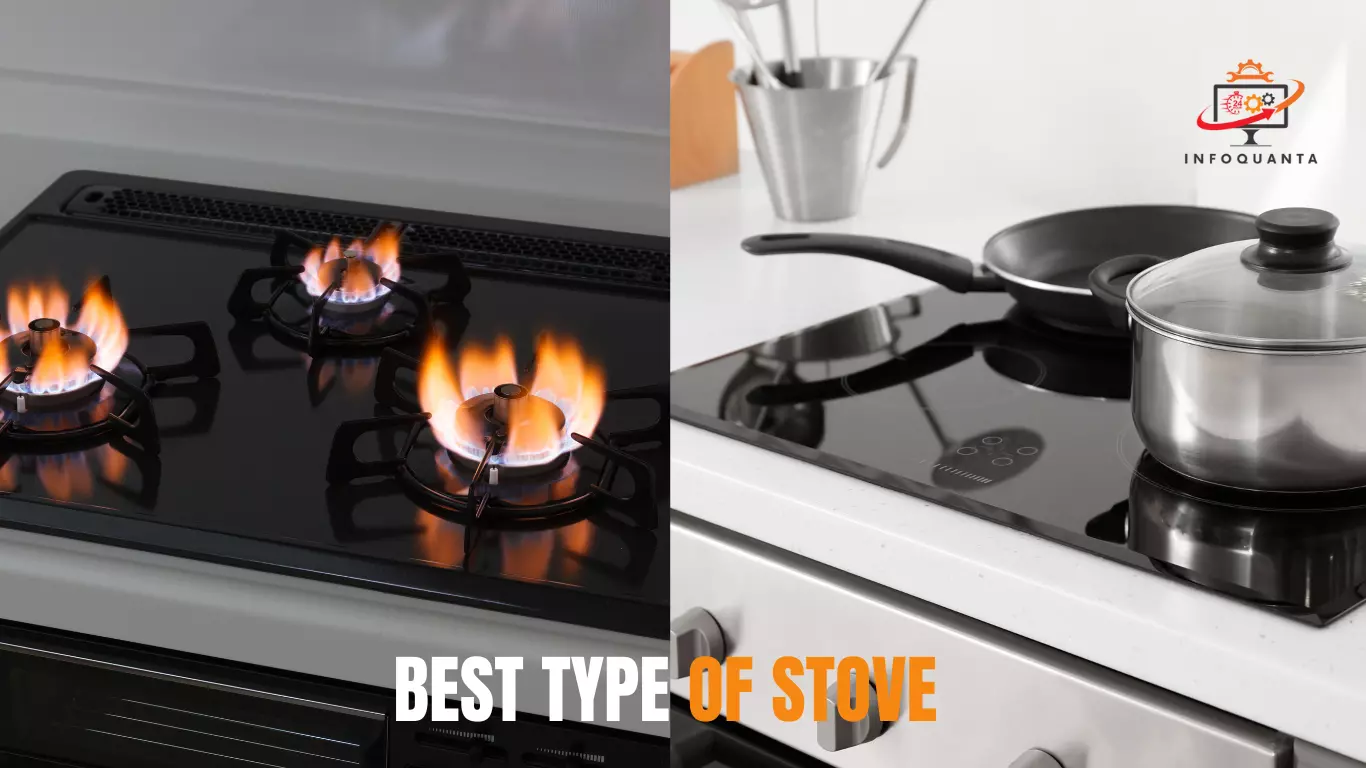Choosing the right stove is a crucial decision for any home chef or cooking enthusiast. With a variety of stove types available on the market, each comes with its own set of benefits and drawbacks. In this comprehensive guide, we’ll delve into the different types of stoves, their advantages, disadvantages, and features. We’ll also provide a handy Top 10 Stoves list with accessories and features, along with a FAQ section to address common queries.
Benefits and Drawbacks of Different Stove Types:
1. Gas Stoves:
- Benefits: Instant heat control, even cooking, suitable for various cookware types, lower operating cost.
- Drawbacks: Open flame poses safety risk, potential for gas leaks, not energy-efficient.
2. Electric Coil Stoves:
- Benefits: Affordable, easy to clean, suitable for most cookware, consistent heating.
- Drawbacks: Slow temperature adjustment, uneven heat distribution, energy consumption.
3. Induction Stoves:
- Benefits: Rapid heating, precise temperature control, energy-efficient, safe (no open flame), easy to clean.
- Drawbacks: Requires specific cookware (induction-compatible), higher initial cost.
4. Ceramic Glass Stoves:
- Benefits: Sleek appearance, easy to clean, even heating, safe (no open flame), modern design.
- Drawbacks: Fragile surface prone to cracking, limited cookware compatibility, slower heat-up time.
5. Dual-Fuel Stoves:
- Benefits: Combines the benefits of gas and electric, versatile cooking options, precise control.
- Drawbacks: Expensive, requires access to both gas and electrical connections.
6. Wood-Burning Stoves:
- Benefits: Adds rustic charm, imparts smoky flavors, works during power outages, energy-efficient.
- Drawbacks: Requires a chimney, can be messy, longer heat-up time, limited temperature control.
7. Pellet Stoves:
- Benefits: Automated fuel delivery, efficient heating, environmentally friendly pellets, easy to control.
- Drawbacks: Requires electricity to operate, pellet availability, maintenance needed.
8. Propane Stoves:
- Benefits: Portable (great for camping), easy to control, suitable for outdoor cooking, clean-burning fuel.
- Drawbacks: Requires propane tanks, not ideal for indoor use, limited flame control.
Top 10 Stoves with Accessories and Features:
| Rank | Stove Model | Fuel Type | Key Features | Accessories Included |
|---|---|---|---|---|
| 1 | Model X | Gas | Rapid heating, precise control | Griddle, wok attachment |
| 2 | Model Y | Electric Coil | Affordable, easy to clean | Drip pans, temperature knobs |
| 3 | Model Z | Induction | Energy-efficient, safe | Induction-compatible pot |
| 4 | Model A | Ceramic Glass | Modern design, even heating | Scraper, glass cleaner |
| 5 | Model B | Dual-Fuel | Gas and electric combination | Broiler pan, grates |
| 6 | Model C | Wood-Burning | Rustic charm, energy-efficient | Ash scoop, firewood rack |
| 7 | Model D | Pellet | Automated fuel delivery | Pellet hopper, remote control |
| 8 | Model E | Propane | Portable, outdoor cooking | Propane hose, regulator |
| 9 | Model F | Gas | Convection oven, precise control | Baking racks, oven thermometer |
| 10 | Model G | Electric Coil | Budget-friendly, consistent heating | Drip pans, oven timer |
FAQs:
Q1: Which stove type is the most energy-efficient?
Induction stoves are among the most energy-efficient options due to their precise temperature control and rapid heating.
Q2: Are gas stoves safe to use?
Gas stoves can be safe if used properly, but they require careful attention and proper ventilation to avoid gas leaks and combustion risks.
Q3: Can I use regular cookware on an induction stove?
No, induction stoves require induction-compatible cookware, which is typically made of magnetic materials like cast iron or stainless steel.
Q4: What’s the advantage of a wood-burning stove over other types?
Wood-burning stoves offer a traditional aesthetic, can operate during power outages, and provide energy-efficient heating. They’re particularly suitable for rustic and cabin-style kitchens.
Q5: Are pellet stoves easy to maintain?
Pellet stoves require regular maintenance, including cleaning the hopper and ash pan. However, their automated fuel delivery system simplifies the overall operation.
Q6: Can I use propane stoves indoors?
Propane stoves are generally designed for outdoor use due to the combustion byproducts they produce. Using them indoors can pose safety and ventilation challenges.
Conclusion
In conclusion, choosing the best stove type depends on your cooking preferences, kitchen setup, and safety considerations. Each stove type offers a unique set of benefits and drawbacks, so it’s essential to weigh them against your requirements. With the information provided in this guide, you’re now equipped to make an informed decision that will enhance your culinary experience.

